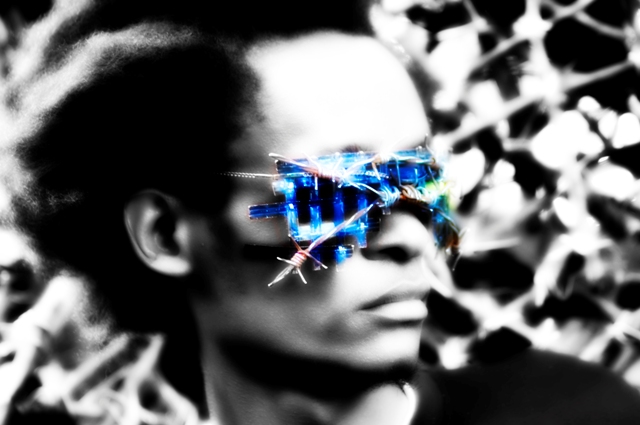The Festival for African Fashion and Arts (FAFA) was set-up in 2008 during the post-election violence which took place in Kenya. As many countries throughout the region continue to know human rights abuse, civil unrest and war, FAFA aims to change perceptions of other communities’, one mind at a time by exploring and bridging cultures through fashion, art and music.
African talent and creativity, ethical consumerism, and a stunning backdrop – this is what FAFA 2010 was all about. Acknowledging and celebrating the immense creativity and beauty in the arts and in the fashion industry in Africa, FAFA hosted their 3rd Annual Fashion for Peace gala evening on the 30th October in Nairobi National Park.
 Photo: Sylvia Gichia
Photo: Sylvia Gichia
Conceptualized by Ann McCreath, creator of Kenyan fashion label KikoRomeo and founder of FAFA, the objective is to draw attention to the immense creativity and sophistication which exist in Kenya and on the African continent while striving to add tremendous value for the people, the environment across the continent and the entire industry.
“Ethical fashion is one of the fastest growing trends within the global fashion industry. It is involves key areas such as recycling, sourcing organic materials, applying fair trade principles and packaging them in a fashionable product that consumers want to buy. Following decades of mass production, wastefulness and unfair treatment of workers, consumers around the world, including here in Africa, are looking at ethics and sustainability as key components of the products they choose to buy. In this sense, FAFA provides a very real entry point for designers on the African continent to be taken seriously”, says Ms. McCreath.
The African continent is slowly emerging as a fashion powerhouse in terms of creativity and innovation. Through increasing the capacity and well-being of the people and communities behind this powerhouse fashion can play an active role in poverty reduction, the development of sustainable livelihoods and in the reduction of harmful effects on the environment.
Trade in fashion products provides key opportunities for communities in Africa. The nature of the fashion and arts industry means that it is possible for those in fashion and the creative arts to work with the community organizations which directly benefit the poor. In Kenya alone 30, 0000 people are employed in the apparel sector. The net effect and return from the fashion industry to the development of communities, families and individuals is enormous.
 Photo: Sylvia Gichia
Photo: Sylvia Gichia
In line with its original mission of fashion for peace, FAFA 2010 aimed to stimulate the industry in Kenya by providing young women and girls – many of whom were affected by the 2008 post-election violence - with the necessary skills and tools that will enable, encourage and support their aspirations and goals of being successful and economically-empowered African women.
Fashion for Peace is a not-for-profit event and proceeds from ticket sales goes to Seed of Hope centre’s which teach young women basic tailoring skills in order to enrich their lives and communities. Through FAFA master classes, these young women will benefit from the know-how of established designers in refining their craft and business growth.















